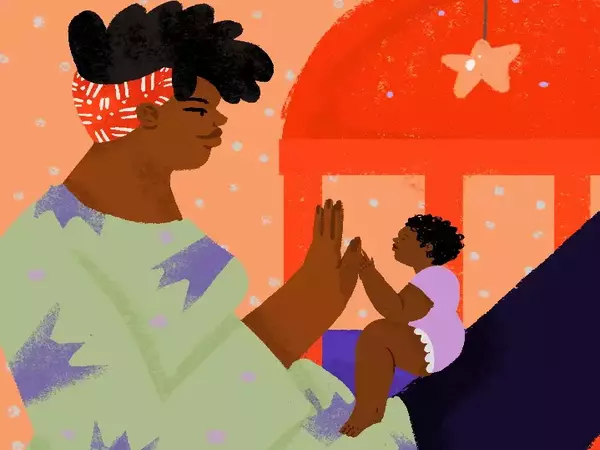It’s well documented that there are significant disparities in childbearing patterns among different racial and ethnic groups, as well as between individuals with different levels of education. For example, studies have shown that women of color, particularly African American and Hispanic women, tend to have higher birth rates than white women. Additionally, women with lower levels of education are more likely to have children at a younger age and have larger families compared to women with higher levels of education.
According to a new study co-authored by Yale sociologist Emma Zang, college-educated Black women in the United States have fewer children than their white and Hispanic counterparts.
The study, published in the journal Population Studies, investigates the role of race, ethnicity, and education in shaping the fertility levels of women born in the United States between 1960 and 1980. It also revealed that Black and Hispanic women with less than a high school diploma have more births than similarly educated white women. When compared to Black and white women with college degrees, Hispanic women had the highest fertility rate.
“Conventional wisdom holds that racial or ethnic disparities in fertility will fade once women in minority groups attain similar education levels and socioeconomic status as white women, but we find that gaps occur at all education levels,” said Zang, assistant professor of sociology in Yale’s Faculty of Arts and Sciences and the study’s lead author. “In general, highly educated women have fewer children than less educated women, but this doesn’t explain the disparities we found among women with college degrees.
“Our findings emphasize the importance of investigating differences in childbearing among socioeconomically advantaged women as well as those with fewer financial resources.”
Conventional wisdom holds that racial or ethnic disparities in fertility will fade once women in minority groups attain similar education levels and socioeconomic status as white women, but we find that gaps occur at all education levels.
Emma Zang
Unlike previous research on race and fertility in the United States, which has typically focused solely on Black and white women, this new study included Hispanic women, who make up at least 19% of the U.S. population, according to the Census Bureau.
For the research, Zang and coauthors Chloe Sariego, a Ph.D. candidate in the Department of Sociology, and Anirudh Krishnan of the Abdul Latif Jameel Poverty Action Lab analyzed four waves of longitudinal survey data from the National Survey of Family Growth (NSFG) from 2006 to 2017 involving a nationally representative sample of 11,117 women. They calculated the average number of children women from each racial/ethnic group and educational level would have over the course of their reproductive years. Additionally, they analyzed the proportion of women from each group who give birth to one, two, or three children.
Overall, they discovered that college-educated women of all races and ethnicities have fewer children than those who did not complete college. According to the study, the difference in fertility between college-educated Black and white women is primarily due to a lower proportion of Black mothers having a second child. Although both groups have a high proportion of one child, the proportion of college-educated Black mothers who had a second child was more than ten percentage points lower than that of white mothers, according to the study. Approximately 80% of college-educated white women had a second child, whereas less than 70% of similarly educated Black women did.

One possible explanation for lower fertility in college-educated Black women is that they delayed having their first child for so long that they did not have enough time to have additional children during their reproductive years. However, the study found little evidence that the timing of when women decide to have children causes racial/ethnic disparities across educational levels.
Previous research has proposed possible explanations for why Black and Hispanic women with no college degrees have higher fertility than white women, according to Zang. Religious beliefs, for example, and a lack of access to health insurance may influence how less educated Black and Hispanic women use contraception. Due to structural racism, Black and Hispanic women without college degrees are also more likely to experience relationship and economic instability than their white counterparts, she explained.
The new study raises several questions concerning the racial disparities in fertility among college-educated women that require further investigation, Zang said.
“Are the differences in fertility due to highly educated Black and Hispanic women being more aware of their racial groups’ higher risk of pregnancy-related complications, such as miscarriage, infant mortality, and maternal mortality?” she asked. “Are they the result of more college-educated Black and Hispanic women having to navigate spaces dominated by white people, such as workplaces, than less-educated Black and Hispanic women, making them wary of confirming the stereotype that they are highly fertile? Do they exist because Black and Hispanic women with college degrees who wanted a second child were unable to have one because of health problems caused by long-term chronic stress related to racism?”
According to the study’s findings, a greater proportion of Black and, to a lesser extent, Hispanic children are born with less-educated mothers than white children, and a smaller proportion are born with college-educated mothers, according to Zang.
“Highly educated mothers have more resources to support their children’s development and chances for success in life,” she explained. “That is to say, when compared to white children, Black, and Hispanic children are born into families with fewer resources, which may exacerbate income and health inequality in the next generation.”














